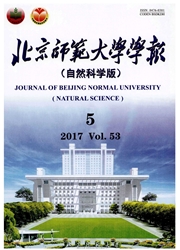

 中文摘要:
中文摘要:
In order to track the footprint of groundwater science teaching and research in China during the past years, a bibliometric analysis was conducted based on the database of China National Knowledge Infrastructure(CNKI), which covered the time span from 1984 to present and included more than 2.6 million master and doctoral dissertations from hundreds of institutions of Mainland China. The bibliometric analysis summarized output, geographical, and institutional patterns, as well as research directions and hotspots in groundwater studies in China in the period of 1984-2014. A total of 1 396 groundwater-related dissertations including 1 161 master dissertations and 235 doctoral dissertations, contributed by 128 institutions distributed in 53 cities nationwide, were searched out in the database. It can be seen obviously that, the groundwater science teaching and research in China has experienced a notable growth in the past three decades especially during 2000-2014. Groundwater modeling, resource, and exploitation were the top three major subject categories; China University of Geosciences(Beijing), Jilin University and Chang’an University were the top three productive institutions together accounting for more than one third of the total dissertations and 50% of the doctoral dissertations, which further prompted the cities(Beijing, Changchun, and Xi’an) to become the top three productive cities. The dissertations generally covered all the international research topics, which indicated that hydrogeologists in China have tracked the international frontier closely during the past decades. The keywords analysis revealed that,(1) numerical modeling was still the hottest topic and PHREEQC, MODFLOW, GMS, and FEFLOW were the four most used softwares;(2) the topics related with groundwater pollution and quality developed steadily and rapidly;(3) environmental isotopes and GIS were frequently used tools for hydrogeological condition analysis, and spatial data processing respectively; and(4) the unsaturated zone as an integra
 同期刊论文项目
同期刊论文项目
 同项目期刊论文
同项目期刊论文
 期刊信息
期刊信息
